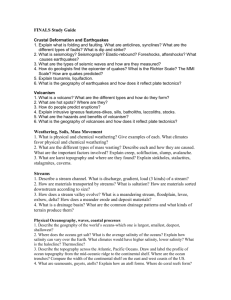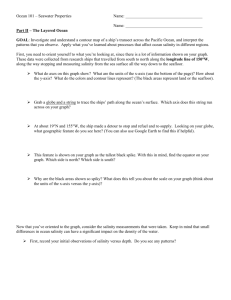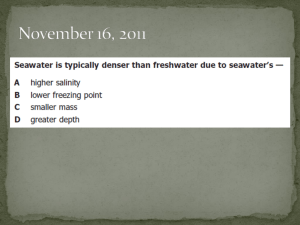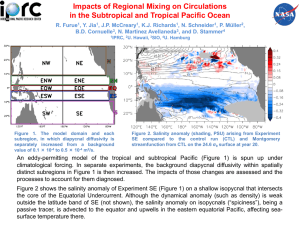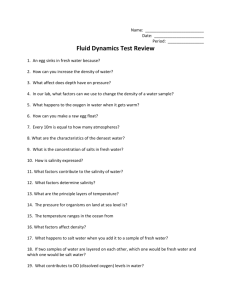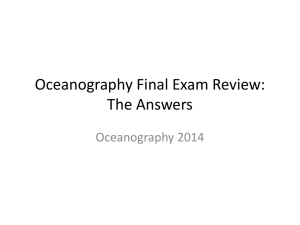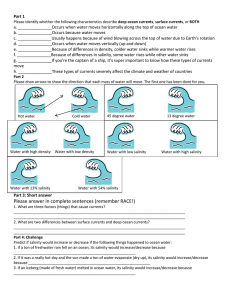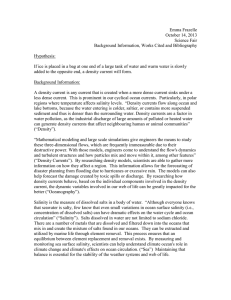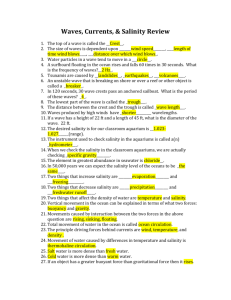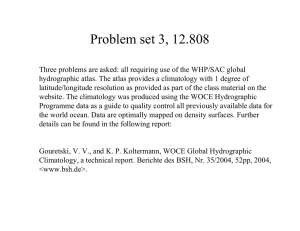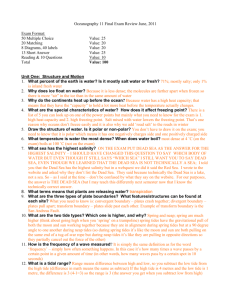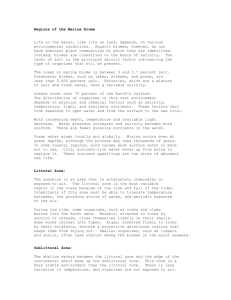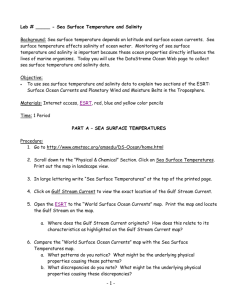The World of Water
advertisement
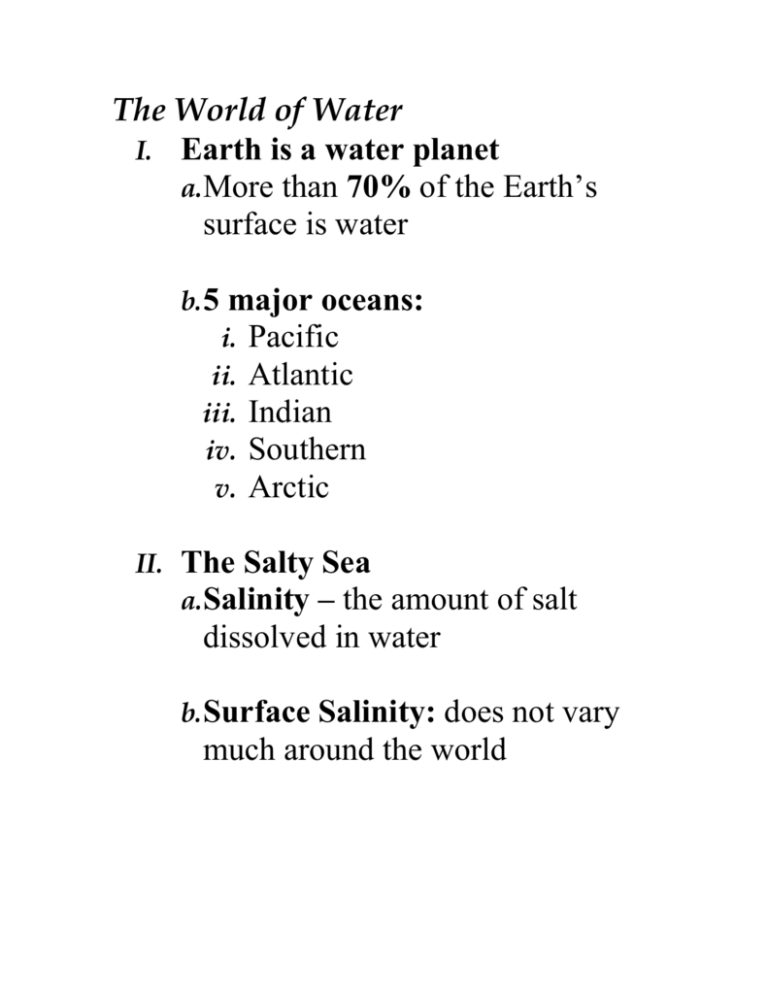
The World of Water I. Earth is a water planet a.More than 70% of the Earth’s surface is water b. 5 major oceans: i. Pacific ii. Atlantic iii. Indian iv. Southern v. Arctic II. The Salty Sea a.Salinity – the amount of salt dissolved in water b. Surface Salinity: does not vary much around the world i. Variability: 1. Areas with high evaporation and low precipitation – HIGH SALINITY 2. Areas with high precipitation – LOW SALINITY c. Salinity & Ocean Depth i. Variability: 1. Salinity increases with depth 2. Not at a uniform rate 3. Halocline Layer – layer of water that shows a rapid increase in salinity; 100200 meters deep III. Temperature: dependent upon source a.Equatorial Source: water currents fed by equatorial regions are warm i. Example: The Gulf Stream b. Polar Source: water currents fed by polar regions are cold i. Example: Atlantic Current & North Pacific Current c. Periodic shifts in prevailing winds create changes in currents i. El Niño – a warm current that occurs during Christmas time in the Pacific Ocean causing devastation to cold water species d.Ocean movements are dependent on temperature i. Cold water is dense; sinks ii. Warm water rises to the surface IV. Pressure a.Sea Level: one “atmosphere” of pressure is placed upon us at all times b. Ascend a mountain; pressure decreases c. Enter the ocean; each 33 feet of depth pressure increases one “atmosphere” i. Humans tolerate pressure up to a few hundred feet ii. Marine organisms are also dependent on pressure 1. Deep ocean organisms can NOT survive at the surface; Surface organisms can NOT survive in the deep 2. Some marine organisms have very specific adaptations that allow them to move between pressure extremes.








